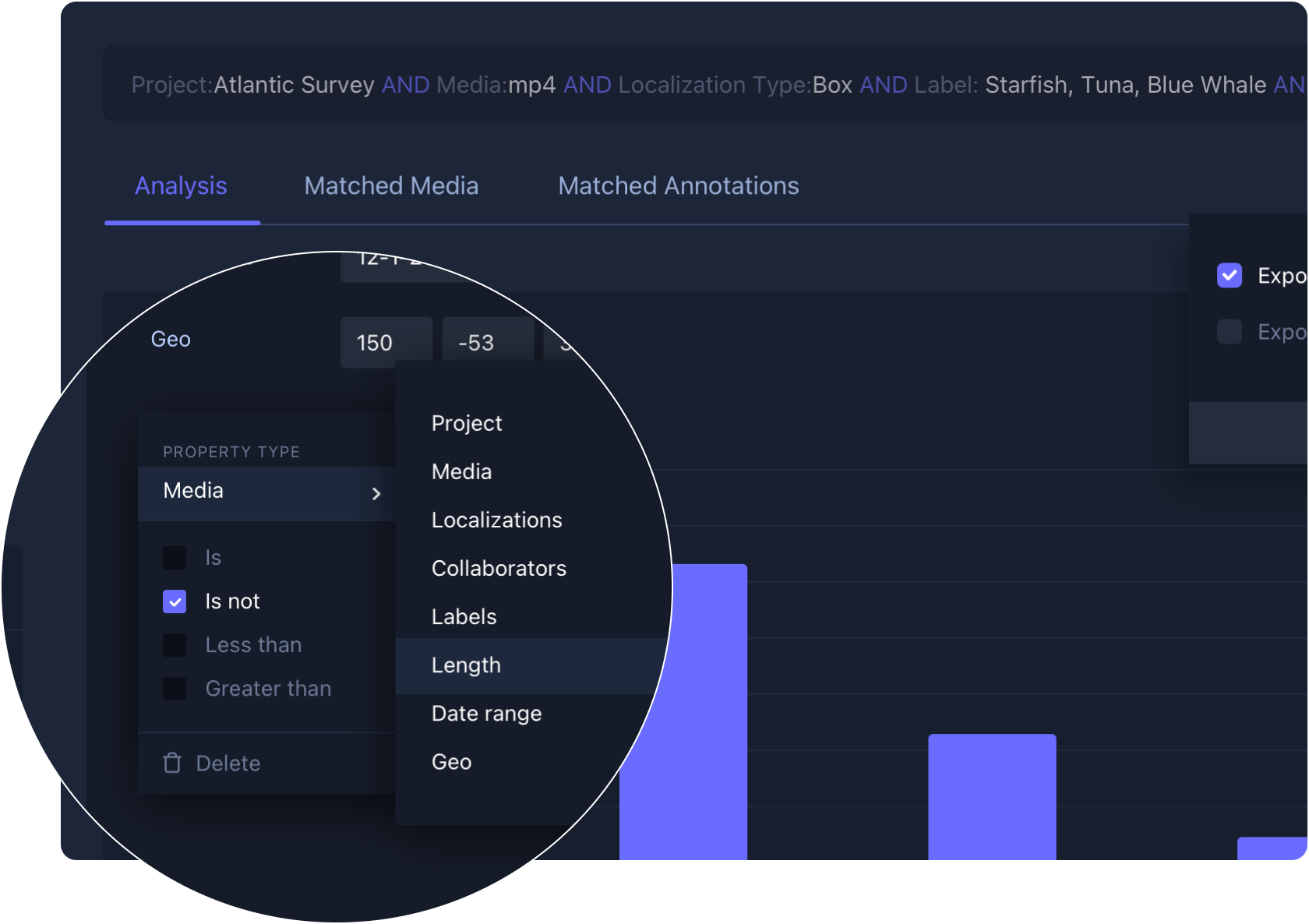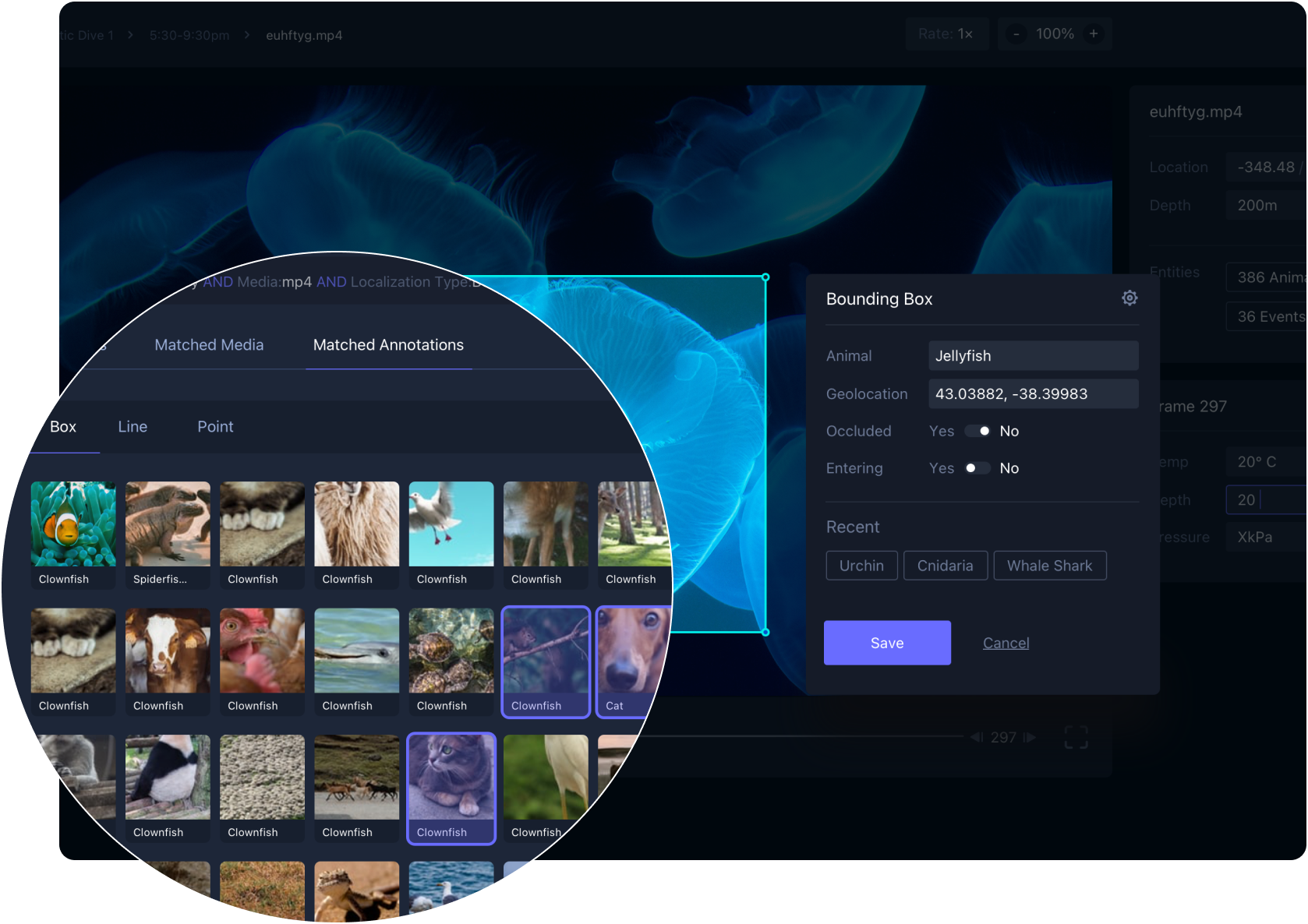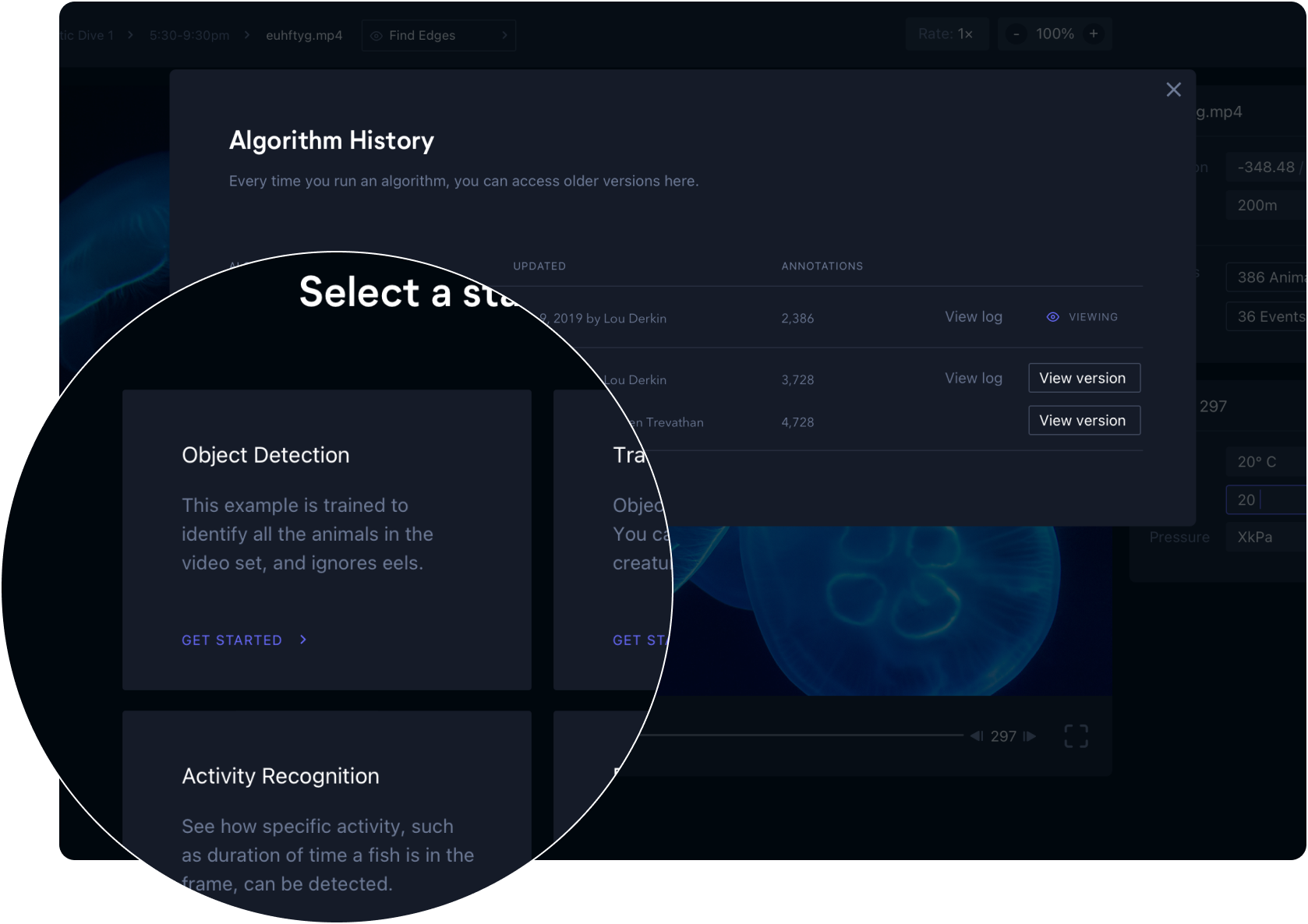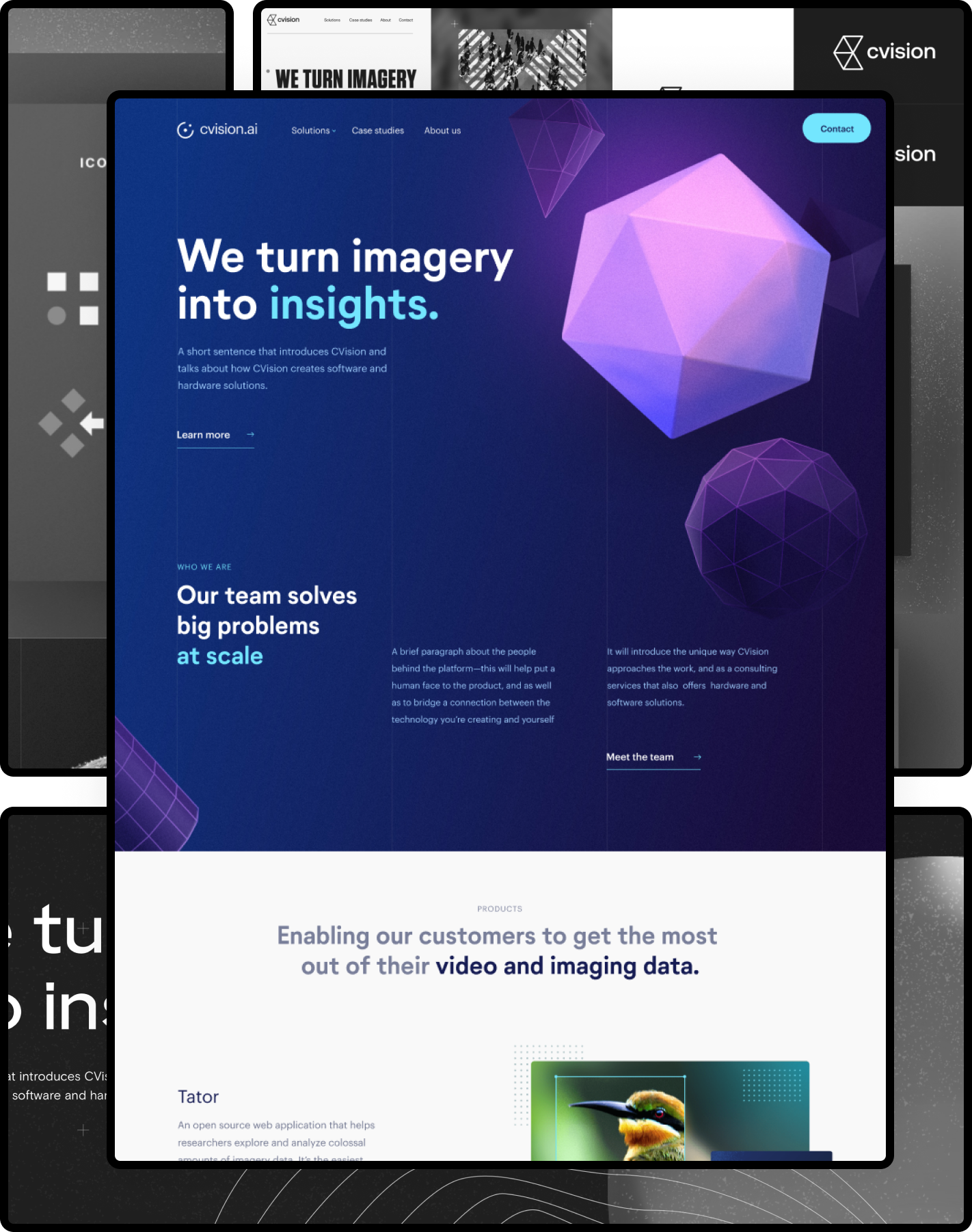Training marine AI through human UX.
CVision unlocks the tremendous iterative power of AI to create video annotation solutions that enhance the speed, scale and accuracy of marine life tracking. Over the course of two distinct but interrelated projects, we worked with the CVision team to design a tool that allows marine biologists and researchers to efficiently transform huge amounts of video into actionable insights, and subsequently to revitalize the CVision marketing site to better reflect their personality, and the value they offer.
We kicked off our partnership with a day-long workshop with the CVision team. Here, we dug into the existing product, its competitors, and the needs of its audience. We interviewed a variety of marine researchers, assistants, and existing customers to further color our understanding of the product, and to uncover new ways to improve and evolve the platform.
Turning imagery into insights
Artificial intelligence works by learning from humans, e.g. running an algorithm against a data set, having a researcher review and correct or enrich the results, then re-running that same algorithm so it can learn. Thus, the more people interact with the platform, the better the quality of the resulting data for an AI program to digest and learn from. Existing tools at that time could make this a limiting or even tedious experience; that's why it was important for us to design a system that drastically streamlined the taxonomic development and review experience for tired-eyed researchers.
 ReportingAnnotatingAlgorithm Development
ReportingAnnotatingAlgorithm DevelopmentReports provide the researcher everything they need to inspect the outputs of their machine learning program. In many tools, reports are where a user may learn something about the available data. In Tator, this is secondary to the primary use: reviewing and correcting the outputs of your machine learning algorithm. The interface allows browsing in a graphical way, but for those more versed in database query methods, we also provided powerful query building and modification features.
 ReportingAnnotatingAlgorithm Development
ReportingAnnotatingAlgorithm DevelopmentAnnotating can be done a couple of ways, and for a number of different reasons. The primary objective for researchers using Tator is to train their algorithms to improve detection and data annotation of any media passed through it. In many cases, the researcher is testing to see what flaws their algorithms may have (such as labeling everything a clownfish, including a squirrel and a cat), and improving them.
 ReportingAnnotatingAlgorithm Development
ReportingAnnotatingAlgorithm DevelopmentMuch like versions of this very case study, an algorithm goes through many iterations before it is ever considered “good enough”. Sometimes a version may be better suited for the job at hand (say, at detecting garbage or debris on the sea floor) than another (one that may be primarily used to detect eels). Using the right tool for the job is made easier with prebuilt starting points, quick algorithm swapping, as well as being able to reflect on the outputs of variant algorithms used on the same data set over time.
To our immense delight, Tator was so well received, we later contracted with a customer of CVision's, MBARI, to develop a community tool directly inspired by Tator's success.
That said, as the quantity of source data grows to hundreds—sometimes thousands—of media files, so too does the importance for easy access to and management of that data. To help the CVision team continue to intelligently scale, we designed a variety of methods researchers can use to optimize their workflows and develop insights from their work directly within Tator, as well as a slew of useful data and project management organization features (things like configurable projects, sub-sections, and dynamic filtering).
Standing up the brand
With the launch and early success of Tator, CVision needed a visual identity and company website that better reflected their personality and could drive home the unique value of their products and services.
Through a heavily collaborative brand and tone workshop, we worked together to define and explore visual narratives and associated themes that felt like possible matches. Using competitive research, moodboarding, and user interviews, we were able to glean enough information to assemble a handful of style tiles (essentially mini brochures, each illustrating a distinct visual direction to consider). Our partners at CVision reviewed and discussed each option with us in depth, allowing us to weed out options that felt too serious or playful, and hone in on the best visual threads to follow.
We settled on a color palette of deep blues and purples to help emphasize CVision's broad aquatic applications, and employed subtly animated geometric shapes in the masthead to give representation to the modeling happening behind the scenes of Tator's seamless interface. The site uses plain language to drive the most meaningful points home, and is supported by a content hierarchy driven by some of Tator's key design principles:
- Reduce interactive overhead as much as possible with glance-able information
- Be opportunistic with time-saving “discoverable” features, to minimize clutter and help the power user move quickly
In essence, it's easily understood at a glance, with plenty of details and visual cues available for those who want to dig deeper.
Getting to help create both the product and the brand for CVision was a blast. We don't always get to contribute to both the user experience and marketing side of our clients, and getting to work holistically is such a delight. We're grateful to count CVision among our partners, and extremely proud of the work we've done together to date.
